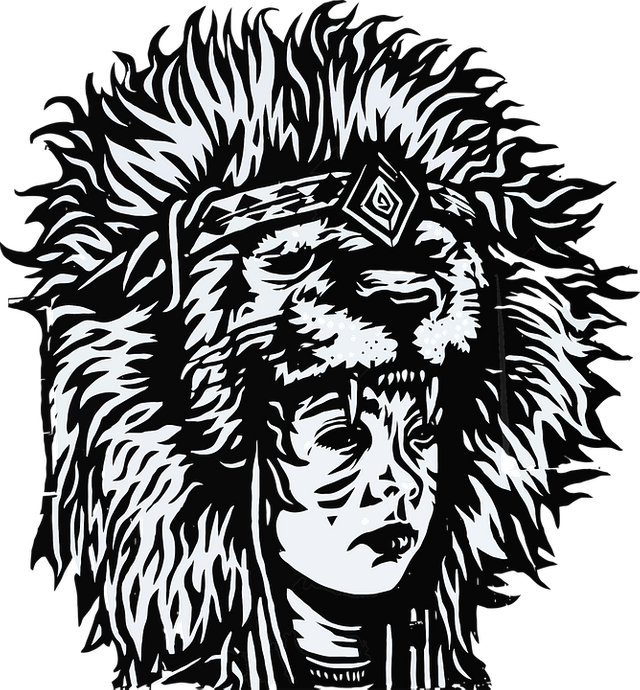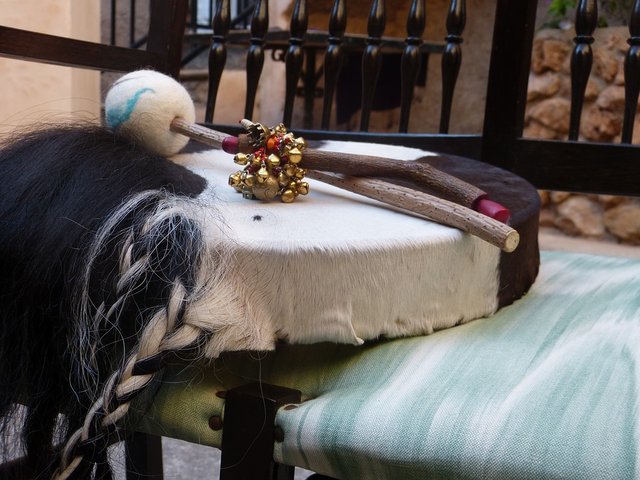
This post introduces two anthropologists working on the subject of shamanism, Mircea Eliade and Michael Harner.
Mircea Eliade (1907-1987)
According to M. Eliade, shamanism is an elementary form of mysticism and it would be present in all religions. Shamanism would be the oldest and elementary form of this mysticism that would have found other forms in other religions, notably in Islam and Christianity. There are several central ideas in the shamanism he describes. That of the ecstasy, the ladder or pillar that symbolizes ascension and descent into the celestial spheres and the idea of dismemberment - reconstruction (death - renaissance) of the shaman. As well as music and drum that helps to get into a trance. The drum is indispensable to the shaman and occupies a primordial place in shamanic ceremonies. Indeed, it helps the officiant to travel through the worlds and to communicate with the spirits. M. Eliade also speaks of the symbolism of the Cosmic Tree which would be found at the "Center of the World". This Tree would act as an intermediary between Earth and Heaven and would give one of its branches for the construction of the drum.
Eliade tells us: "Because the box of his drum is drawn from the very wood of the Cosmic Tree, the shaman, in drumming, is projected magically near this Tree; He is projected to the "Center of the World" and, at the same time, can ascend to the Heavens ... This whole set shows the solidarity that exists between the Cosmic Tree, the shamanic drum and the celestial ascent. " 1
The choice of the tree that will supply the wood needed for drumming depends mainly on the "spirits" with which the shaman communicates.
"The imagery of the drums is dominated by the symbolism of the ecstatic journey. [...] The initial drumming of the session, intended to evoke the spirits and to 'lock them up' in the drum of the shaman, constitutes the preliminaries of the ecstatic journey. It is for this reason that the drum is called the "shaman's horse". [...] The shamanic drum stands out precisely from all the other instruments of "the magic of noise" because it makes possible an ecstatic experience." 2

It would seem that we find the drum and its symbolism almost in all the cultures where shamanism is present. This leads to the conclusion that it is indispensable in the ceremonial process of shamanism.
Michael J. Harner (Born in 1929)
According to M. Harner, shamanism would be composed of an universal skeleton. Through his personal experiences, on the ground in South America, he came to the conclusion that there would be a "Core shamanism". The latter would be composed of several elements. It refers to the drum, to the body movement (dance), to a guardian animal, to the handling of objects for the cures (crystals), to the cosmic levels (world from below - from above and middle). And all this would also be to reach a changed state of consciousness, usually on a journey, which would be the predominant element to find solutions to the problems that Men encounter.
*
The shamanic journey
"A shaman is a man or woman who voluntarily enters into a changed state of consciousness in order to contact and use a reality that is usually hidden in order to acquire knowledge and power, To help other people. The shaman has at least one, and usually several "spirits" in his service. " 3
"Shamanic knowledge survives mainly among peoples who, until recently, had an intact traditional culture. The knowledge they preserve has been acquired through hundreds of generations, in situations of life and death. The ancestors of these peoples have thoroughly learned and used it in their efforts to maintain health and strength, overcome serious diseases, and overcome the threat and trauma of death. " 4
It is interesting to draw parallels with the Westerners who seek this shamanic medicine. Like those who have preserved and perpetrated this tradition, there is behind it a search for healing, performance in the face of the challenges of life and acceptance of the reality of the life which confronts us with death. These are universal questions to which the shaman should be able to respond thanks to the journey he undertakes between the worlds.
*
The shamanic drum
"The drum and the rattle are the main instruments used to enter SSC. [...] The repetitive sound of the drum is fundamental for the accomplishment of shamanic tasks in SSC. It is not for nothing that the Siberians and other shamans sometimes designate their drum under the name of horse or canoe that carries them into the World from below or the World from above. The regular and monotonous beating of the drum acts as a carrier wave, first to facilitate the entry of the shaman into SSC, then to support it in its journey." 5
*SSC = Shamanic States of Consciousness
"It is an SSC that we see shamanically. One can call this visualizing, imagining, or, as the Australian aborigines express it, using "the powerful eye". Although such a vision takes place in a modified state of consciousness, comparing it with hallucination would be a non-experience prejudice that would prevent us from directly understanding what it is. [...] The SSC normally allows a perfect remembrance of the experience when the shaman returned to OSC, contrary to the trance characteristic of Western spiritual mediums. [...] The SSC does not necessarily involve amnesia." 6
In addition, Harner tells us that: "Neher's laboratory research has shown that the sound of the drum produces changes in the central nervous system. Rhythmic stimulation affects electrical activity in "many sensory and motor areas of the brain that are ordinarily unaffected, through their connections with the stimulated sensory area." 7
*
We can see that at Harner and Eliade, the symbolism of the drum is similar. This idea of a vehicle helping the shaman to travel beyond our world. As well as the fact that it is found in all shamanic traditions across the planet. This demonstrates that the place of the drum is paramount in a SSC research.
Image sources : A, B
Information sources :
1 : M. Eliade, Le Chamanisme et les techniques archaïques de l'extase, Paris, Payot, 2015 ; p.164-165
2 : M. Eliade, Le Chamanisme et les techniques archaïques de l'extase, Paris, Payot, 2015 ; p.168-169
3 : M. J. Harner, La Voie du chamane ; un Manuel de Pouvoir et Guérison, traduit par Z. Bianu, Paris, Mama, 2011 ; p.55
4 : M. J. Harner, La Voie du chamane ; un Manuel de Pouvoir et Guérison, traduit par Z. Bianu, Paris, Mama, 2011 ; p.81
5 : M. J. Harner, La Voie du chamane ; un Manuel de Pouvoir et Guérison, traduit par Z. Bianu, Paris, Mama, 2011 ; p.95
6 : M. J. Harner, La Voie du chamane ; un Manuel de Pouvoir et Guérison, traduit par Z. Bianu, Paris, Mama, 2011 ; p.94
7 : M. J. Harner, La Voie du chamane ; un Manuel de Pouvoir et Guérison, traduit par Z. Bianu, Paris, Mama, 2011 ; p.96
English book :
Mircea Eliade, Shamanism: Archaic Techniques of Ecstasy, 1964
Michael J. Harner, The Way of the Shaman, 1980
Good to you,
@lastminuteman

